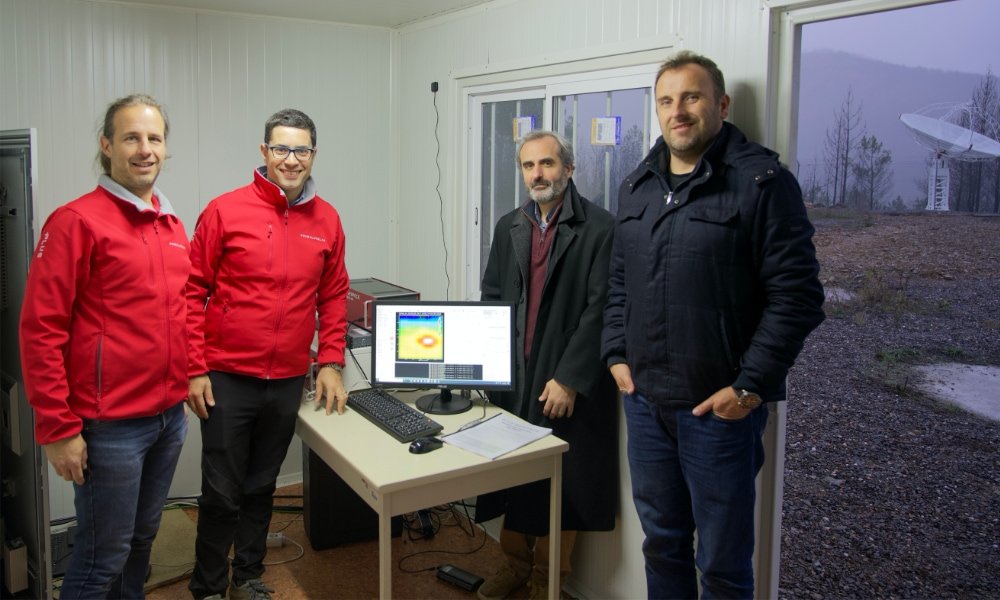SPIDER 500A installed in Porto da Balsa radio astronomy station
PrimaLuceLab team completed the installation of the 5 meter radio telescope that will be used by Telecommunication Institute of Aveiro (Portugal). SPIDER 500A will be remotely controlled thanks to the Networking Module for RadioUniversePRO software.
The SPIDER 500A radio telescope has been shipped to the Porto da Balsa radio astronomy station in Portugal and it has been installed by our Installation Team in 3 days of work. In this article we show what we did in order to make the SPIDER 500A radio telescope fully operational.
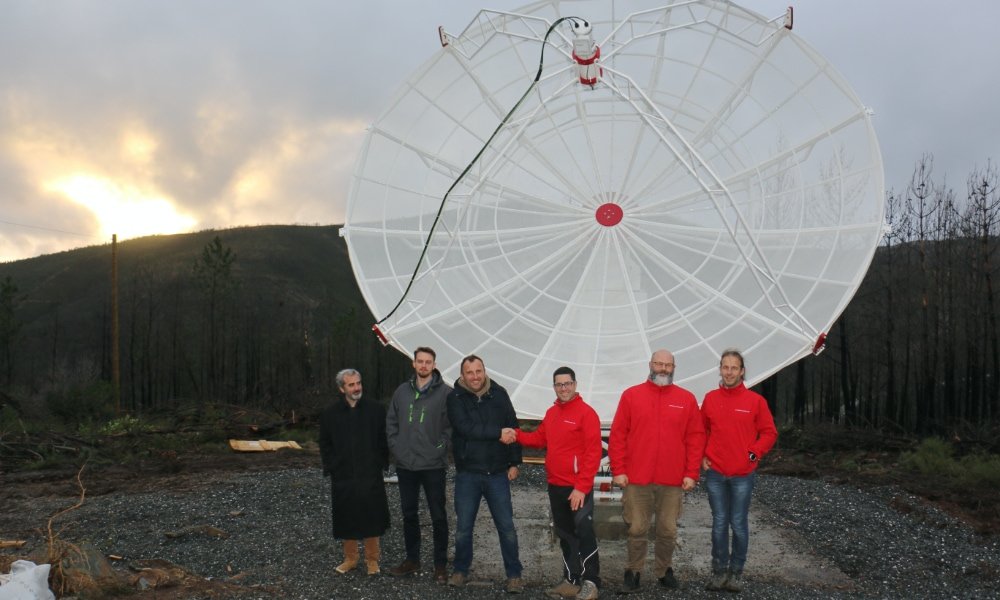
The SPIDER 500A radio telescope has been shipped in two large crates (one for the antenna with accessories, one for the mount with the pier for concrete base) that are specifically designed for safe shipment of the instrument. PrimaLuceLab Installation Team removed all the elements of the radio telescope and inspected that all the parts were in perfect conditions.
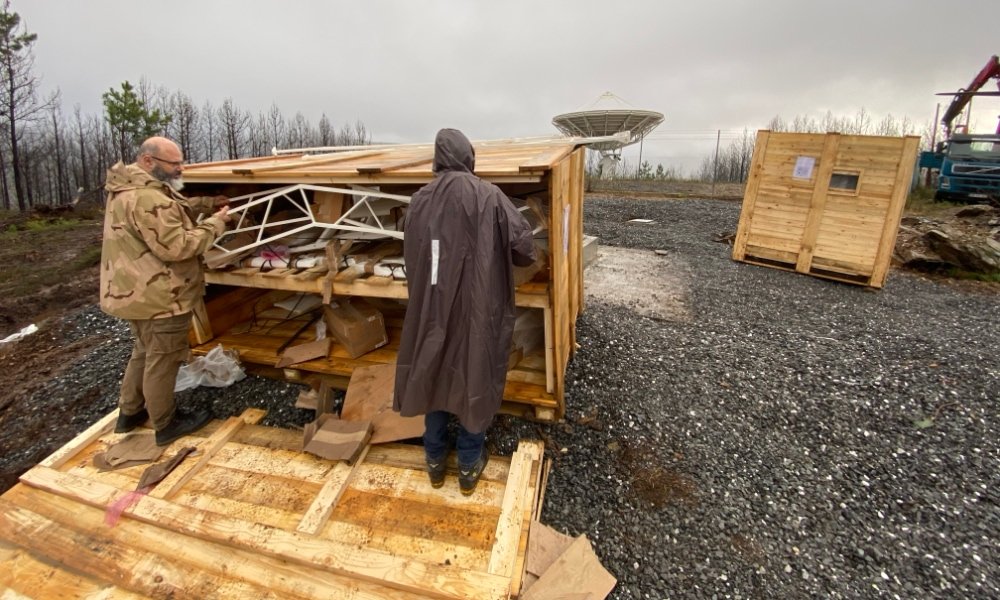
The first step is to install the large C400-HEAVY high load capacity pier on the concrete base that has been built following the drawings provided by PrimaLuceLab. The large pier has been fixed on the foundation with 8 threaded bars and it has been perfectly leveled.
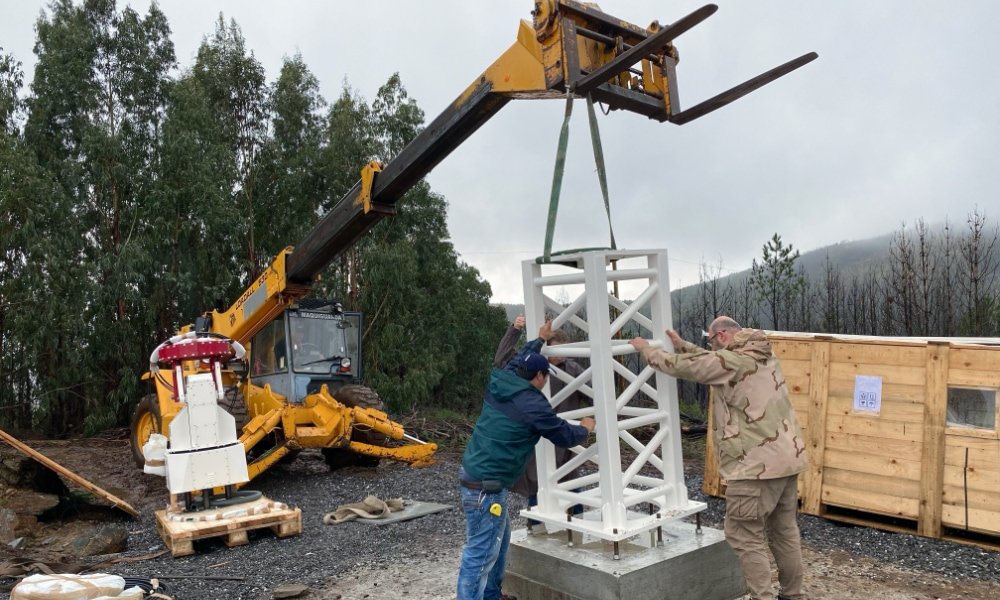
Then, by using the WP-400 mount as support, PrimaLuceLab Installation Team assembled the large 5 meter diameter antenna. The antenna comes with its 1420 MHz optimized feed horn supports and a special design rear supports for installation on the mount with the maximum rigidity.
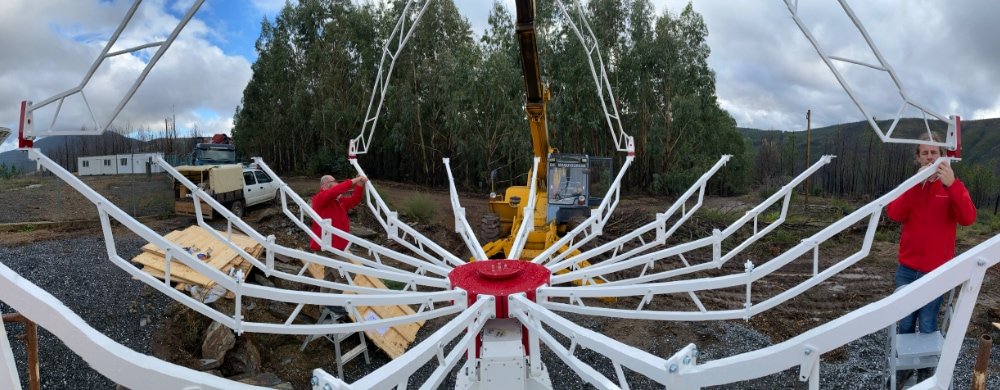
After the antenna support has been completed, we installed the 12 elements that compose the main 5 meter diameter reflector. The antenna reflector is made up of aluminum with a fine mesh and it’s really lightweight: this way it can be easily installed on the antenna supports and it also reduces thee wind load on the antenna itself.
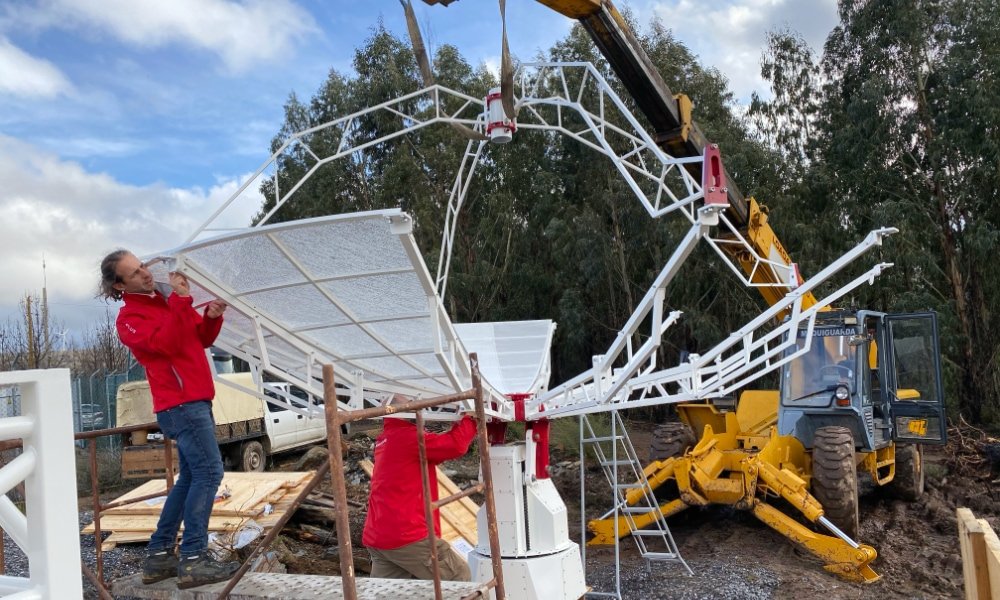
The antenna main reflector is installed on the rear support by fixing it with many large screws. This way we provide a very rigid connection to the rear mechanical parts of the antenna. Another advantage of this connection is that the gravitational force doesn’t act directly on the antenna main reflector and minimizes deformations because of its weight.
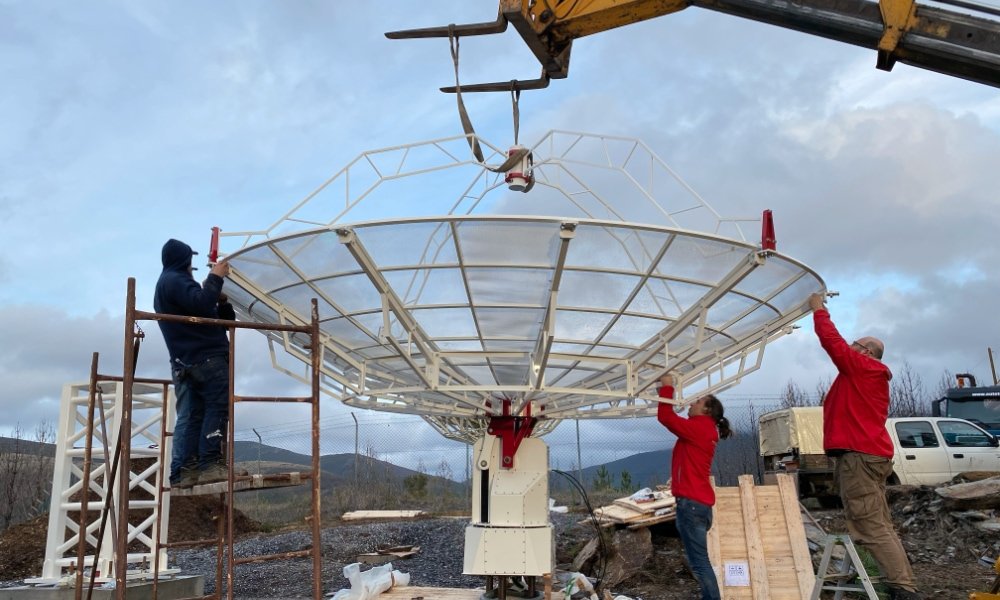
By using a proper lifting tool, the giant WP-400 mount has been installed on the pier. The mount is pre-assembled in our factory, this way the installation on the large pier is pretty straightforward. The mount weight is 350 Kg and it’s designed not only to be operational also in bad weather conditions but to allow you point and track objects in the Universe with the best precision.
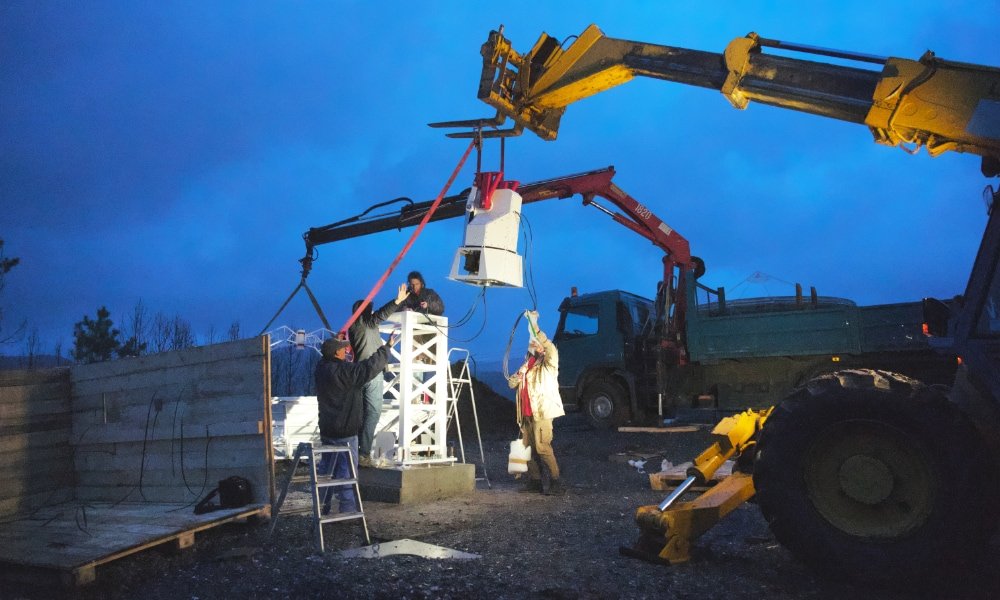
The antenna has been moved on top of the mount head by using a proper lifting tool fixed on the mount upper plate with many high resistance large screws for a perfectly stable mechanical support. After the first day of work the radio telescope antenna was ready, in the next day the Installation Team proceed with the installation of receiving system and electronics.
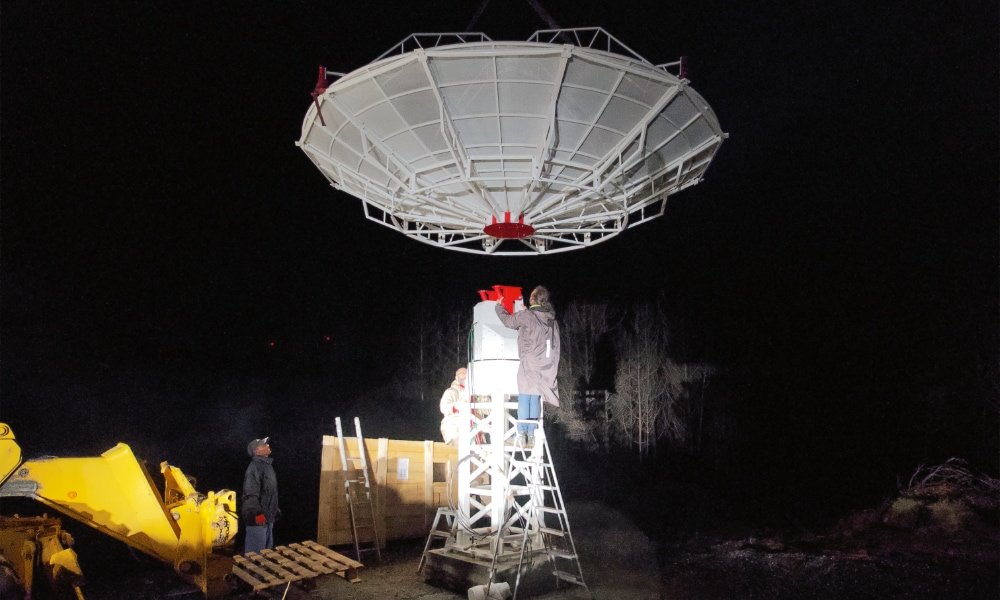
Radio2Space team completed the installation of all the power and data cables that connect the SPIDER 500A external unit (antenna and mount) to the control room. Finally, the LNA units (the SPIDER 500A has 2 LNAs, one for the left and one for the right circular polarizations) and the NSgen noise generator for absolute calibration are connected to the 1420 MHz optimized feed horn.
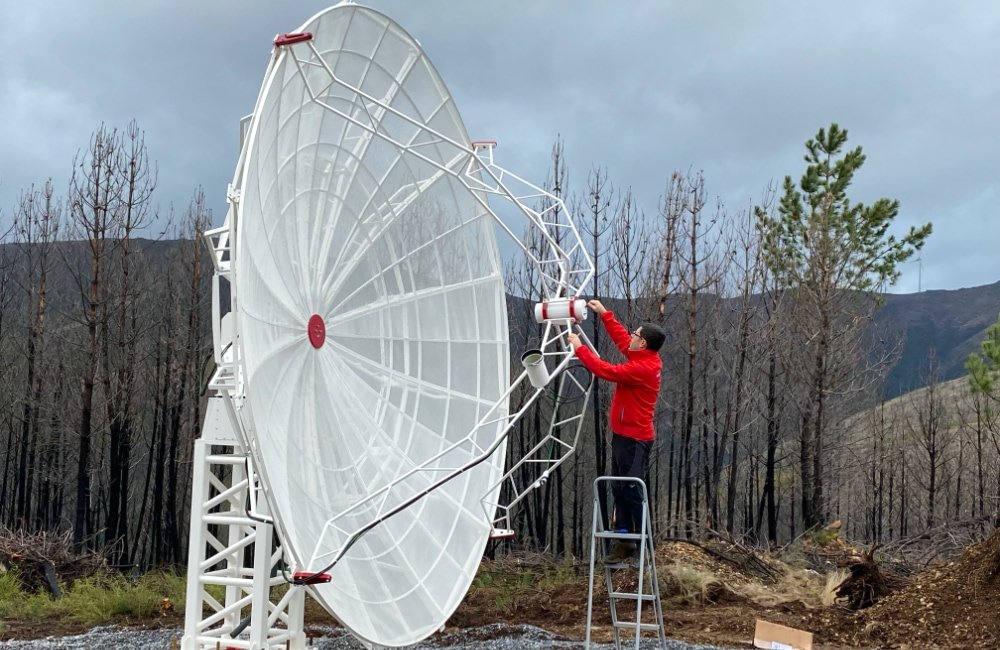
In the control room, we installed the RCPU-400 control and power unit of the radio telescope’s mount and the H142-One radio astronomy receiver for 1420 MHz frequency. Then we installed our RadioUniversePRO software in the computer provided by the Telecommunication Institute of Aveiro.
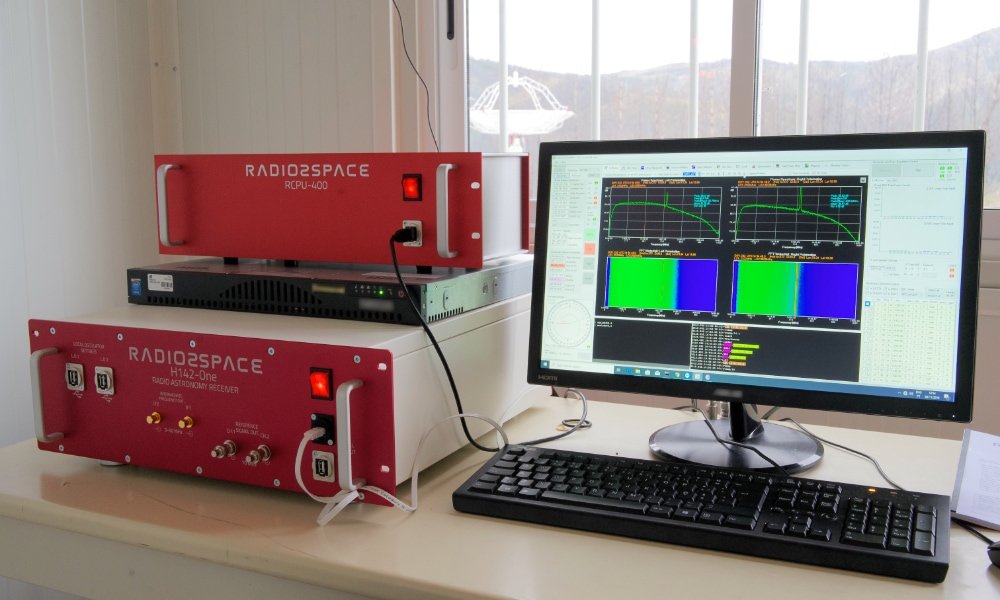
At the end of the second day of work the SPIDER 500A radio telescope was fully operational and the PrimaLuceLab Installation Team performed all the controls needed to verify all the systems. We performed the alignment of the radio telescope to the sky and tested the receiving system on different calibration targets.
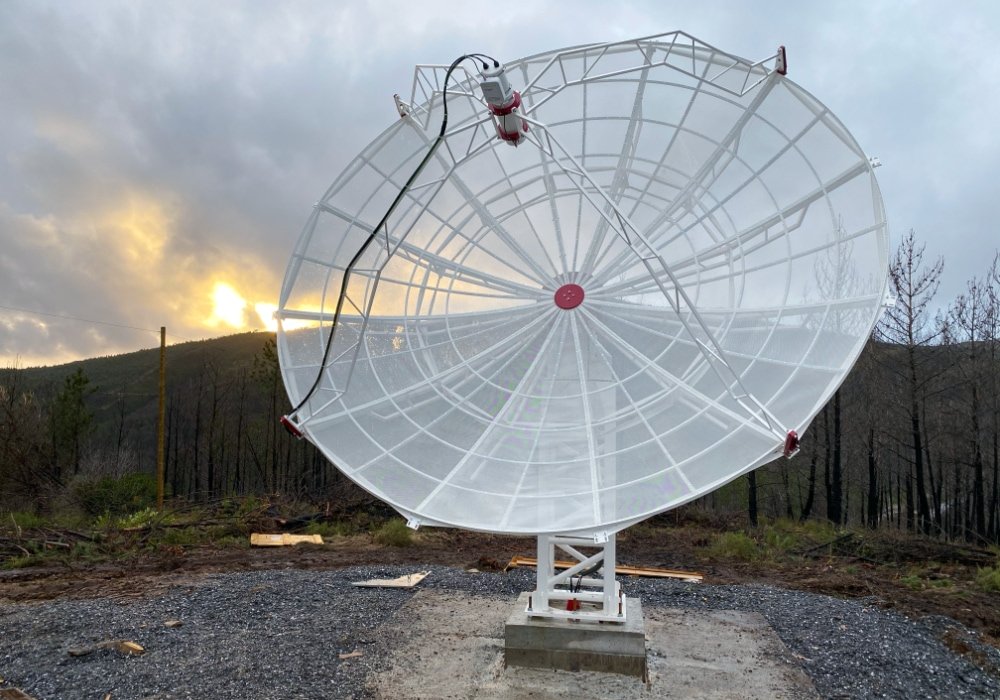
The SPIDER 500A radio telescope in Porto da Balsa radio astronomy station is now ready. Also if we had a very rainy and windy day in Portugal, we recorded the first light of the radio telescope by recording a radio map of Cassiopea A with 1 hour of integration time, visible in the picture below. The radio telescope is now ready for Telecommunication Institute of Aveiro!
